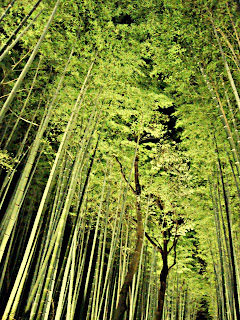During the days leading up to 2013, it was a mad rush to write New Year greeting cards known as nengajo. There were many people I wanted to thank and the nengajo was a good way to express my gratitude to the friends and loved ones who had treated me kindly the past year.
In the malls, bookstores or convenience stores, you could find nengajo with various cute designs. The nengajo from these places tend to be pricier. For example, at Izumiya, a departmental store near my place, a set of 5 cost 598 Yen. As I was looking for nengajo which incorporated symbols of Kyoto, I bought most of my nengajo from the Japan Post. The Japan Post sold nengajo at 50 or 55 Yen per piece. The nengajo usually comes with postage included in the cost so you do not have to pay additional on postage stamps.
 I found some simple nengajo from the Japan Post which were only embellished with a small illustration of the Shimogamo Shrine (a World Heritage Site in Kyoto) on the bottom right corner. The white space allowed me to add words and designs of my own. Since designing your nengajo is quite a common practice in Japan, I also bought a calligraphy pen, cute ink stamps and stickers to decorate my nengajo. You could buy all these at affordable prices from the 100 Yen shop. Alternatively, if you have spare cash, you could check out LOFT.
I found some simple nengajo from the Japan Post which were only embellished with a small illustration of the Shimogamo Shrine (a World Heritage Site in Kyoto) on the bottom right corner. The white space allowed me to add words and designs of my own. Since designing your nengajo is quite a common practice in Japan, I also bought a calligraphy pen, cute ink stamps and stickers to decorate my nengajo. You could buy all these at affordable prices from the 100 Yen shop. Alternatively, if you have spare cash, you could check out LOFT.
There are many online resources on how to write nengajo using the right phrases as well as how to write the addresses in the correct format. The Japan Post had a special page dedicated to such information as well in the days leading up to the New Year. I found it really useful and I recall it came with an English version. The page also contained various designs of nengajo which you could download if you did not want to buy them off the shelf. There was a page with the dates by which you had to post your nengajo if you wanted them delivered by the first day of the New Year. Yes, in Japan, it is a custom to send your nengajo so that it arrives exactly on the first day of the New Year. Right now, the page is closed but do check back towards the end of the year to see what kind of resources are available.
It was a good feeling writing the nengajo to express my thanks to all those who had helped me in 2012. It was an even better feeling to receive nengajo on New Year's Day. If you are in Japan around the end of the year, try writing and sending out nengajo to your family and friends to make their day!
It was a good feeling writing the nengajo to express my thanks to all those who had helped me in 2012. It was an even better feeling to receive nengajo on New Year's Day. If you are in Japan around the end of the year, try writing and sending out nengajo to your family and friends to make their day!












.jpg)






































